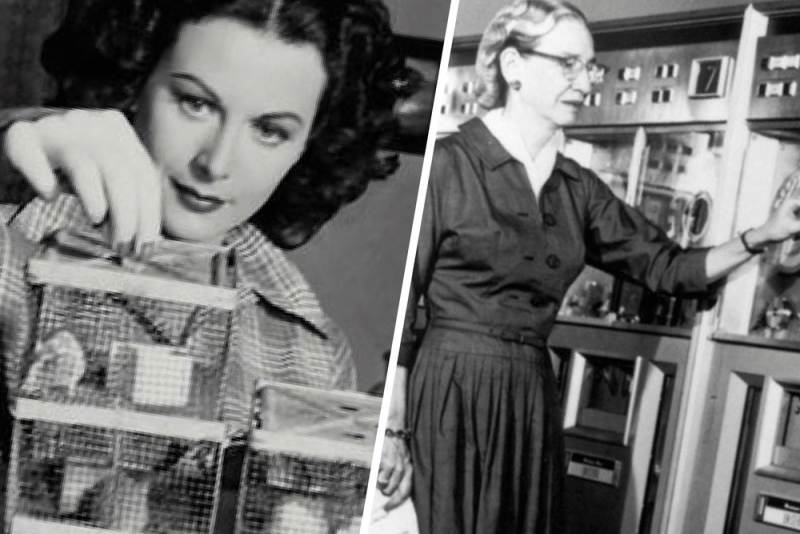You don’t need to be a mathematician to know that men still outnumber women in STEM careers four to one. And although the number of women in science, technology, engineering, and mathematics is growing, the road hasn’t been a smooth one. Women have come up against plenty of blockades, going unrecognized for their work and often excluded from the journals and/or societies of their day. But although history has tried to hide it, the truth is women have made some incredible contributions to STEM subjects throughout the years.
This article salutes some of the first, best, groundbreaking, utterly badass, world-changing women of STEM from the past two hundred years.
Ada Lovelace: Prophetess of Modern Computing
1815-1852
When Charles Babbage designed the Analytical Engine, few people understood it. That’s where Ada Lovelace came in, basically schooling every scientist of her time on the potential of modern computing.
She recognized Babbage’s machine could be more than just a calculation engine. A visionary, she believed its functionality could be applied to words, pictures, and music. In other words, she foretold modern computing.
If that weren’t enough, she also wrote the first computer program to go with it, using looping and conditional branching techniques still in use today.
Marie Curie. Because science.
1867-1934
No discussion of groundbreaking women of STEM would be complete without mentioning two-time Nobel prize winner Marie Curie.
Curie (along with her husband Pierre Curie) discovered two elements: polonium and radium. Her work forms the basis for x-ray technology and cancer treatments which have saved countless lives.
Not content to just be the first lady of science, she also began a prize-winning science dynasty: her daughter Irene Joliot-Curie won the Nobel prize in 1935. And Marie’s granddaughter, Hélène Langevin-Joliot, is a nuclear physicist who still consults for the French government today.
Lillian Moller Gilbreth, Industrial Engineering Pioneer
1878-1972
Perhaps you grew up watching or reading Cheaper by the Dozen, the story of twelve kids growing up with efficiency-expert-parents — but you might not have realized the real-life scientist behind the story was Lillian Moller Gilbreth.
Gilbreth has been called a “genius in the art of living.” An engineer and doctor in psychology, and considered to be the first industrial/organizational psychologist, she took her knowledge of the scientific process and combined it with her husband’s passion for efficiency. Together, they revolutionized industrial engineering. Her daughter later wrote a book on how they applied that knowledge to their family life, which was made into the film you know and love today.
Gilbreth was the first to meld psychology, the scientific method, and industrial design — giving rise to entirely new disciplines. This science is at the forefront of making our work and play better, and we have her to thank for that.
Grace Hopper, Because Necessity is the Mother of Modern Computing Language
1906-1992
Many people don’t realize it was women who were at the forefront of early programming. One of these women was Dr. Grace Murray Hopper.
In those days, programming required heavy math skills, something many businessmen didn’t possess. Hopper envisioned a user-friendly computer language which would make it possible for businessmen to program. FLOW-MATIC was born.
FLOW-MATIC is not just a great name for a rap album—it was the first English-like data processing language. Her work gave rise to COBOL, a computer programming language designed for use in commerce, which is still in use today.
Hedy Lamarr, Technology Ninja
1914-2000
If you’re reading this article on your Bluetooth-enabled tablet over WiFi, you can thank Hedy Lamarr.
Many people know her as a sultry 1930s film star, but she was also an inventor. Self-taught, she was the sort of nerd who would rather stay home inventing than attend a Hollywood party — even though she most certainly had invites to all of those Hollywood parties.
At the beginning of World War II, she came up with the idea of using frequency-hopping to keep Axis powers from intercepting communications. This technology matured into the Bluetooth and WiFi we use to this day! Her ideas have improved everything from television, to printers, to those in-home virtual assistants we’re finally getting. All because of the glamorous Hedy Lamarr.
Erna Hoover, Revolutionary Software Designer
1926-
You may not know her name, but Erna Hoover revolutionized the communications industry — while she was on maternity leave.
After earning her Ph.D at Yale, Mrs. Hoover took a job at Bell Labs. A few short years later, while in the hospital recuperating from the birth of her second daughter, she had an epiphany.
You see, up until then, phone systems were hardwired and frequently became overloaded. Hoover envisioned a way to use software to manage it — basically revolutionizing modern communications.
Hoover received one of the first software patents ever for her design, and the principles of her invention are still in use today.
Roma Agrawal: Tomorrow’s Engineer, Today.
1983-
Roma Agrawal is only at the beginning of what is becoming an illustrious career in Structural Engineering. Only 35 years of age, Agrawal has already worked on major projects like London’s Shard.
Born in Ithaca and raised in Mumbai, Agrawal came to London to complete her degree. Since then, she’s built a towering list of achievements, including Young Structural Engineer of the Year.
Though women comprise only 8% of engineers in the UK, Agrawal is working to change that. With a long career still ahead of her, she’s one to watch in the coming years.
The Next 200 Years
The world is better because of the work of these women — women who’ve challenged stereotypes and entered fields previously dominated by men. They came with their own fresh insight, bringing new understanding into existing fields. Whether it’s by combining disciplines, or by making unparalleled contributions, they’ve given rise to the tools and technologies indispensable in today’s world.
Rock on, women of STEM.








